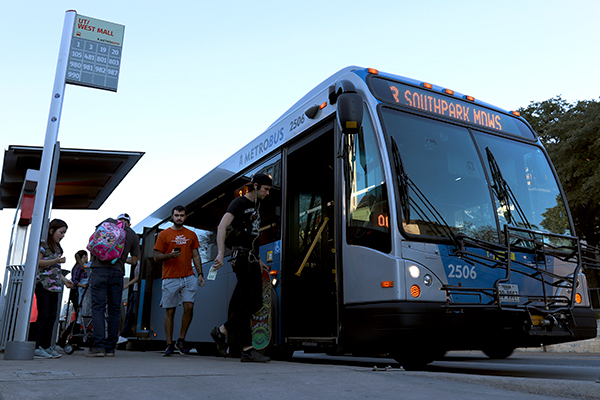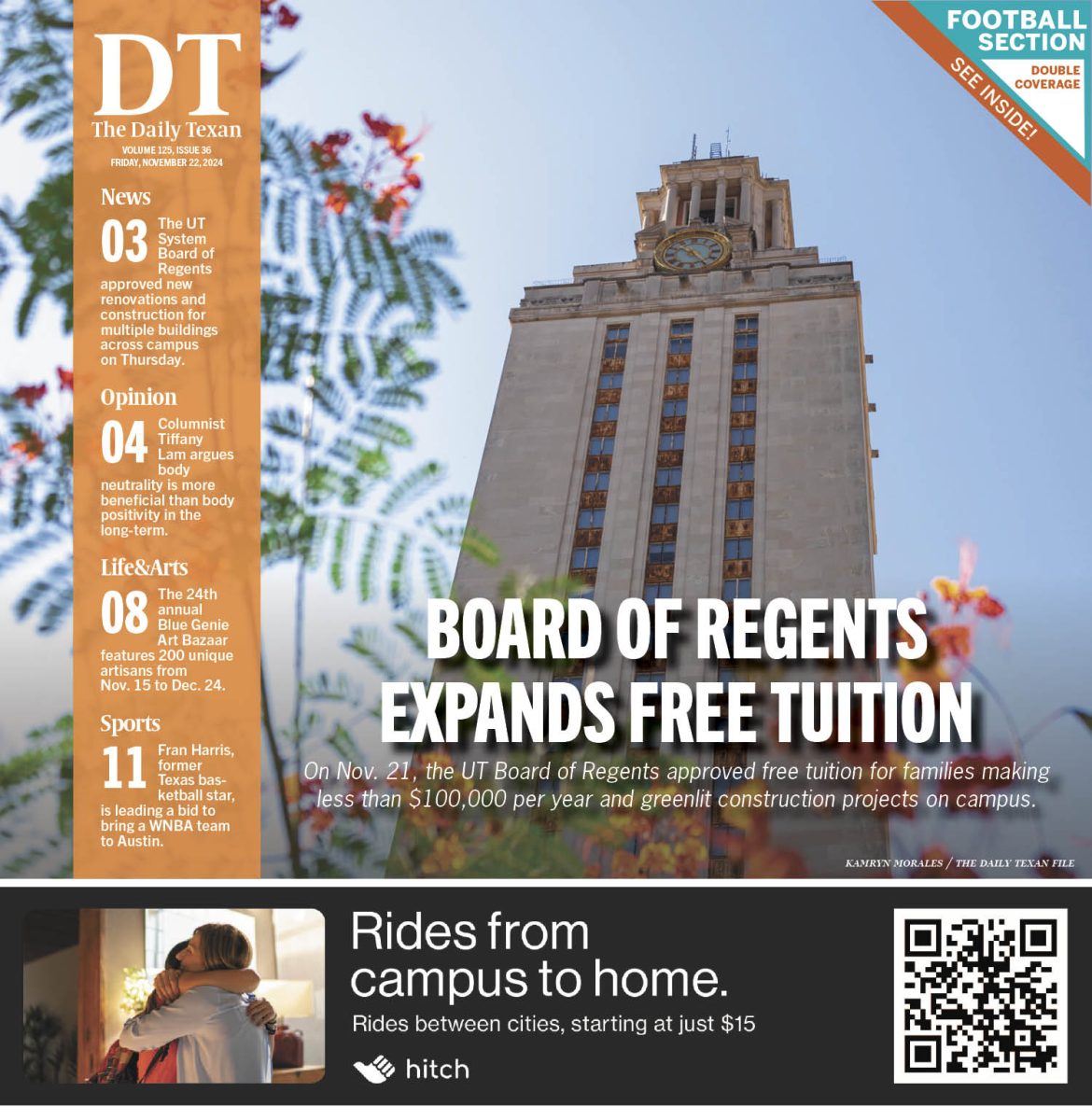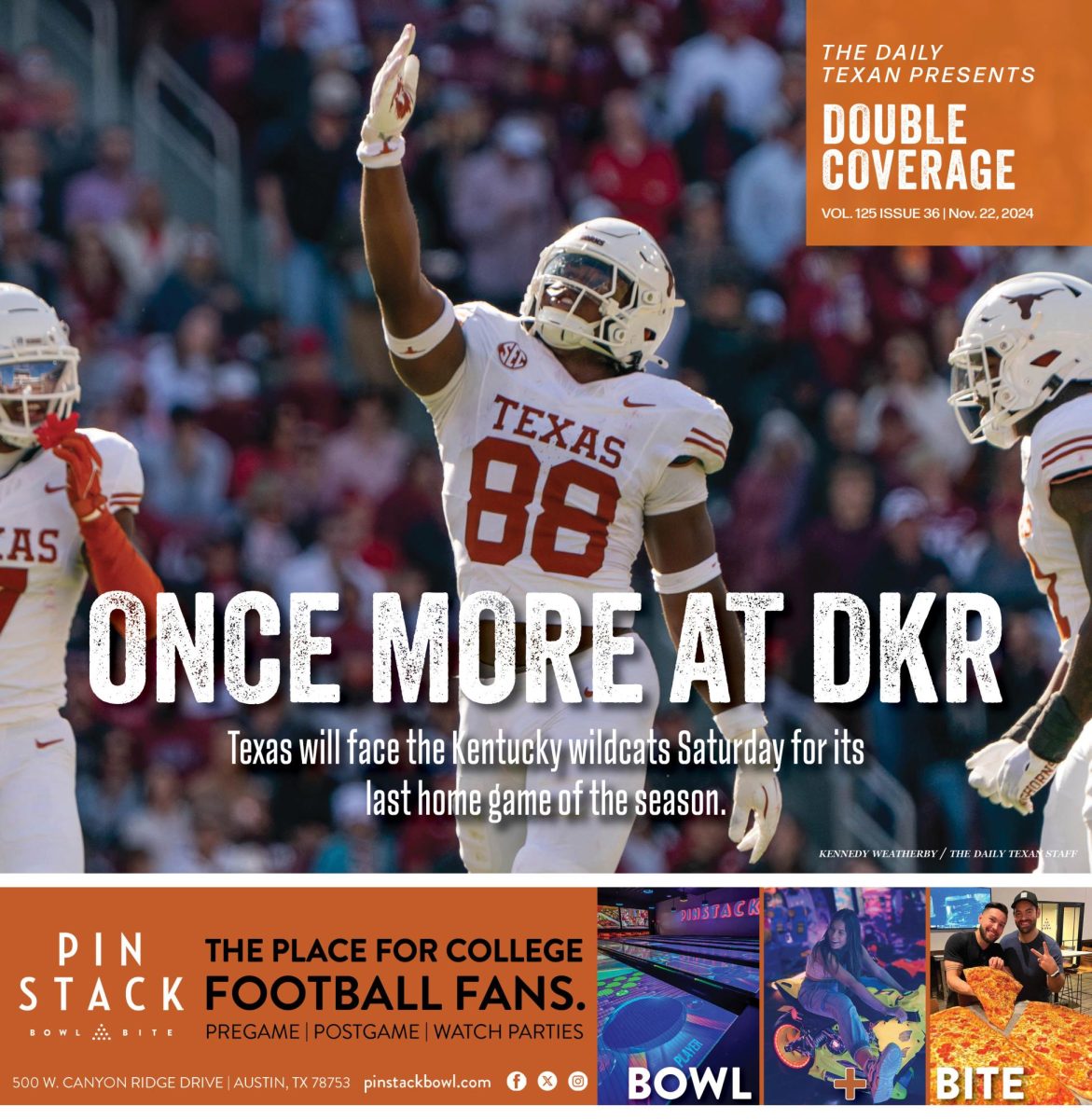CapMetro’s future light rail could eliminate vehicle traffic on Guadalupe
February 7, 2022
Editor’s note: This article first appeared in the Feb. 4, 2022 flipbook.
Capital Metro’s future light rail could eliminate vehicle traffic from The Drag, simultaneously solving the West Campus “transit desert,” according to associate architecture professor Junfeng Jiao.
Option B of CapMetro and Austin Transit Partnership’s December 2021 plan would create a transit mall on Guadalupe Street, permitting only the light rail and buses from 22nd Street to 29th Street. The transit mall would include full bike and pedestrian facilities. Alternatively, option A of the plan would create a light rail, but contain vehicle traffic to one lane. These options are part of Project Connect, a $7.1 billion plan passed by Austin voters in November 2020.
“The goals of (a) light rail in the area is to maximize person throughput through the corridor, increase (the) level of transit service to the area and provide operational flexibility and resiliency across the system as transit network changes the future,” a CapMetro representative said in an email.
The neighborhoods surrounding UT, including West Campus, are a transit desert, or an area with limited transportation, Jiao said. The light rail could be a solution.
Removing vehicle traffic from the Drag would enhance cyclists’ and pedestrians’ safety and provide easy access to a frequently-running light rail, the CapMetro representative said.
“When you try to cross Guadalupe Street, you encounter many different interruptions, mainly coming from cars,” Jiao said. “If we just reduce or completely remove the cars, people can have a relatively smooth transition from walking to the light rail. It is a very thorough safety perspective and a much better solution than having vehicle traffic on streets.”
The CapMetro representative said the light rail project referenced other cities’ transport options, like the 16th Street Mall in Denver, when considering what transit would function best on the Drag.
The Drag currently transports 6,500 people per hour, according to ATP. Option B has the capacity to transport over 20,000 people an hour through the no-traffic transit mall, according to the projection.
The project also aims to accommodate West Campus’ growing population, which increased an estimated 77% from 2000 to 2015, according to ATP. Jiao said he believes the light rail will not create a major problem for drivers in West Campus as they can re-route to other streets and residents will have more transportation options.
“As a walker and somebody who’s just trying to get to class, I would feel safer not having cars on Guadalupe at all,” French freshman Eva Eaton said. “Walking to class is scary (because of) speeding.”
Mass transit systems like a light rail emit less pollution than cars due to their increased passenger capacity, Jiao said.
“It can reduce (students’ and residents’) financial costs and they can easily go a longer distance through the light rail,” Jiao said. “They also don’t need to pay insurance, gasoline and car maintenance.”
Eaton said she spends a significant portion of her salary on gas, so having the transit mall would offer her another mode of cheap transportation as well as a safer walk to campus.
“As a student, and definitely as a driver, it would be less stressful and overall better,” Eaton said. “It’s better for the environment; I love that about it. I think it would make getting into campus from West Campus a lot easier.





